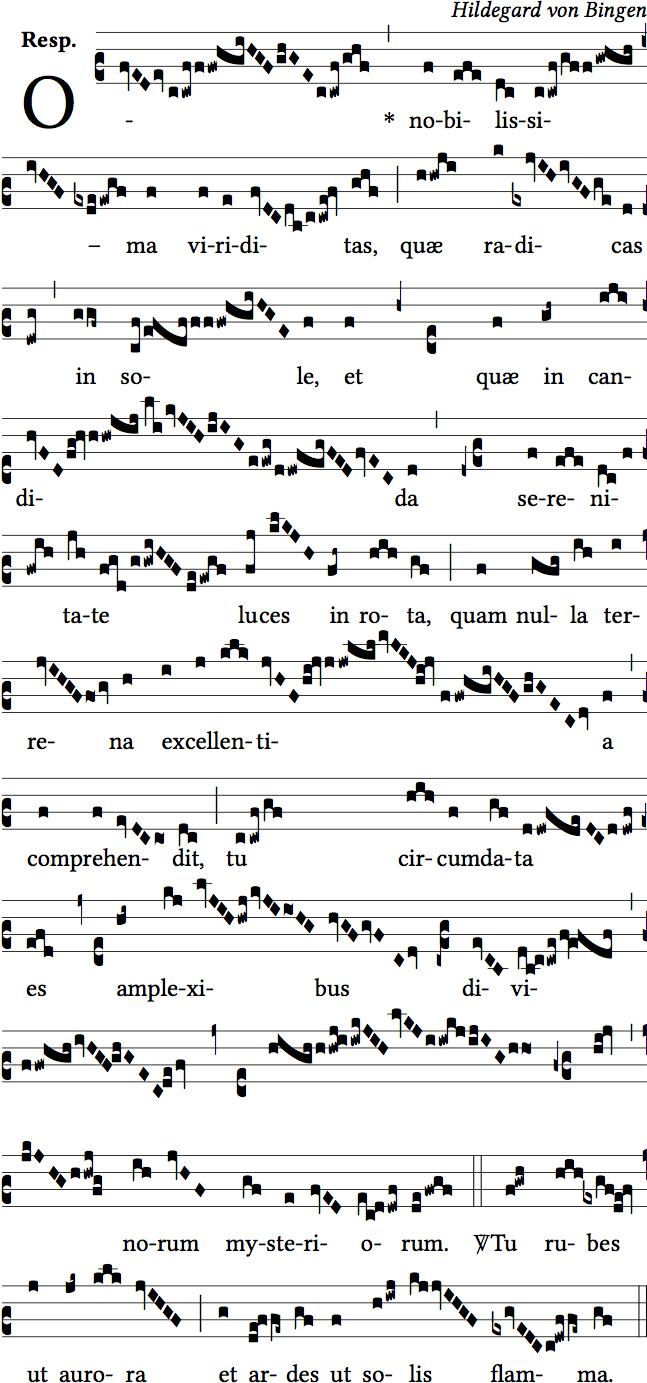Origins
Lately, I’ve found that my own creative life revolves around interests in current events (my work “Union Protest,” for example, was a response to the Occupy movement and in particular, the Madison, WI manifestation) as well as my love of liturgical music (such as my recent organ solos based on Advent chants). I also think carefully about how a particular work of mine might respond to a given audience or set of circumstances. In 2006, for example, Dan invited me to compose a work for the orchestra, also to be performed during the orchestra’s visit to Vienna. The resulting work, “rocks, rivers, earth and sky,” was a kind of aural postcard of Decorah, given to the audience in Vienna as a way of communicating the sound of a place. So my first inclination was to create a new piece that would reflect an interest of mine and possibly shed light on a topic or issue dear to my heart.
I recently attended a two-part presentation on Hildegard of Bingen at Good Shepherd Lutheran Church in Decorah, IA, where I am a member and also the organist. I have known about Hildegard and her music, in particular, for many years, having composed a choral work based on one of her hymns, “O Virtus Sapientiae,” in 1997. For many listeners, Hildegard’s music is directly tied to a wonderful recording made in 1993, “A Feather on the Breath of God,” which I first encountered in a college music history class.
Among the things I learned at this recent presentation (offered by Pastor Joan Mau and Jutta Anderson) was that Hildegard began her life as the companion of an anchoress in Disibodenberg in Germany. She was literally walled into a two-room cell in a church, where she remained for perhaps 25 years (it’s not clear exactly when she entered, but she was either 8 or 15 years old). That story in and of itself is amazing, but perhaps more amazing is the fact that Hildegard went on to live a full life as a abbess, theologian, artist, composer, and ecologist. She was a remarkable woman not only for her time (1098-1179) but for all times.
As a way of honoring her rich body of work and perhaps communing with it on some level, I have decided to use one of her hymns, “O Nobilissima Viriditas” as the starting point for my piece. Below is the original Latin text, along with a translation, and the original medieval notation.
| O nobilissima viriditas, quae radicas in sole, et quae in candida serenitate luces in rota, quam nulla terrena excellentia comprehendis, tu circumdata es amplexibus divinorum mysteriorum.Tu rubes ut aurora, et ardes ut solis flamma. |
O most noble greening power, rooted in the sun, shining in dazzling serenity in a sphere that no earthly excellence can comprehend. You are enclosed in the embrace of divine mysteries.You blush like the dawn, and burn like a flame of the sun. |


Leave a Reply